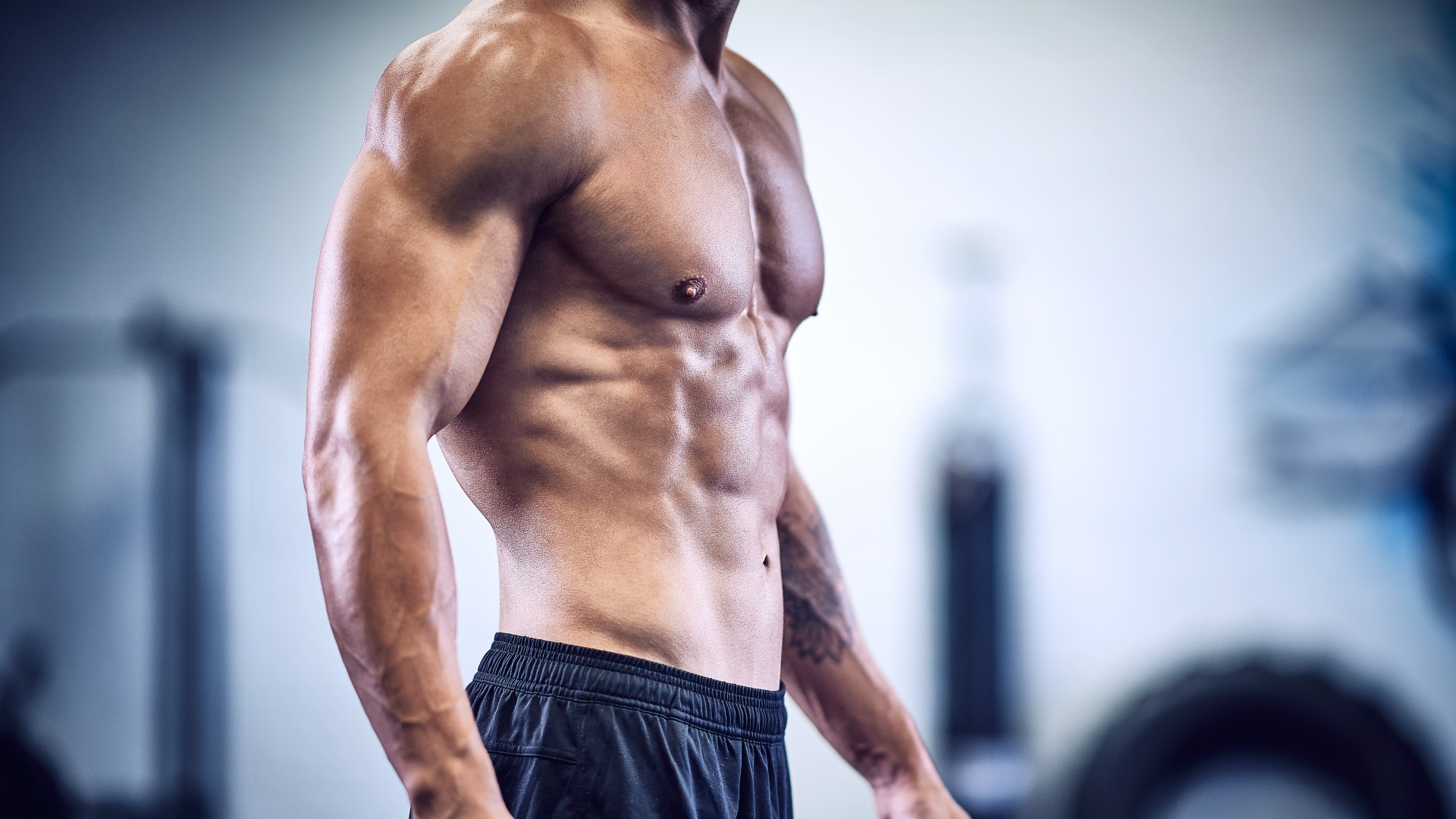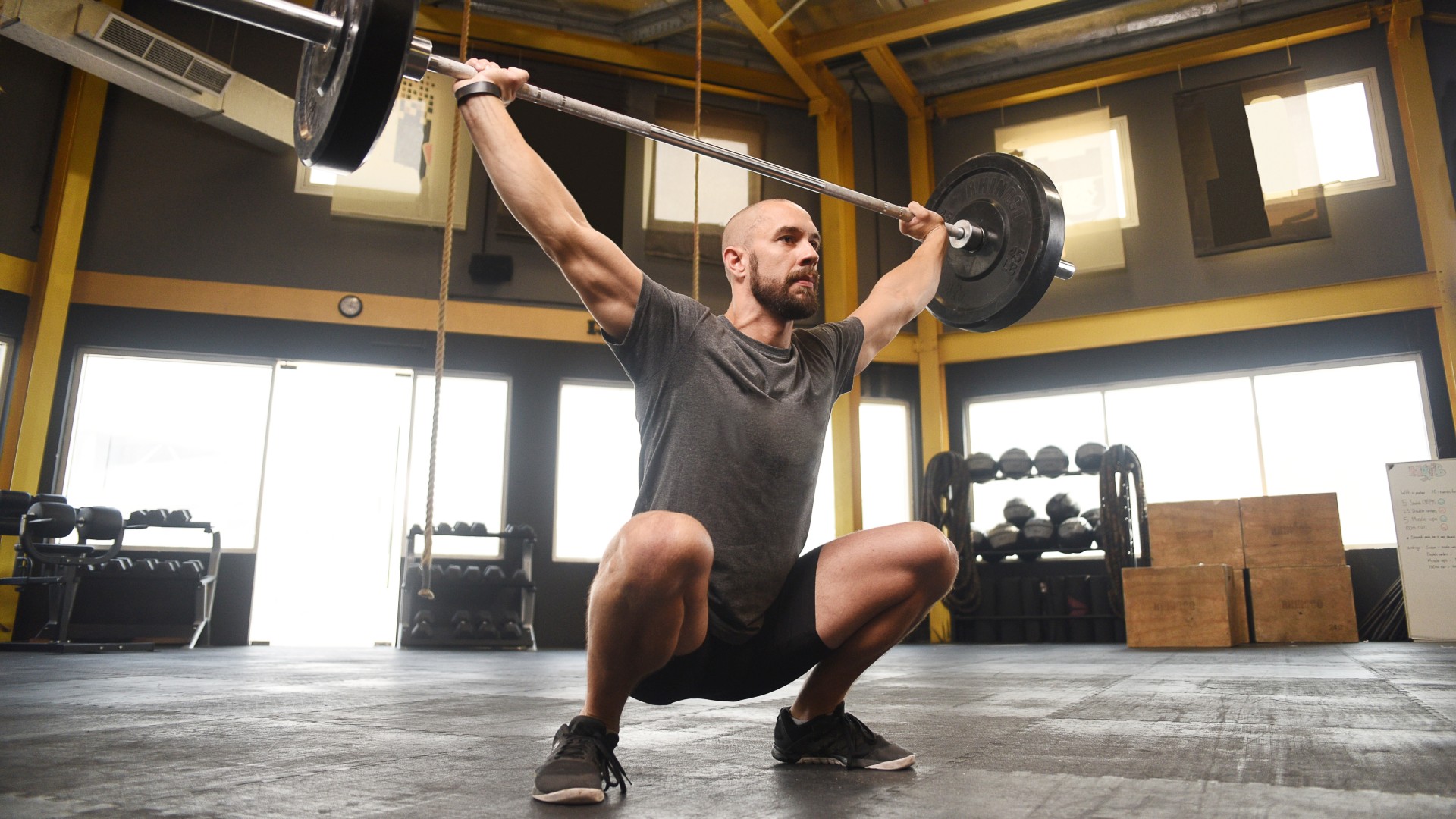I'm a weightlifting coach — these are the 3 exercises I prefer over sit-ups for building a strong and stable core

I’m so bored of seeing sit-ups featured in so many workouts — yes, they build stronger abs, but are they really the best exercise for abs or core strength? Absolutely not.
Whenever I’m asked what exercises clients should be doing to strengthen their core muscles, I always say three things, and only one of them has anything to do with the exercises themselves: consistency, progression and compound exercises.
Sure, ab and core workouts are great additions to any strength program, but if you really want to build a strong, stable core, think big and powerful lifts, performed consistently, with progression. That doesn't mean you need to be advanced or lifting super-heavy weights, either.
Here are three perfect examples of weightlifting exercises that will build you a core that is strong, injury-resistant and stable, without a sit-up in sight.
Are sit-ups bad for you?

Don’t get me wrong, I still throw sit-ups into the mix here and there, but there’s an entire library of exercises that work your many core muscles (not just the abs) and are far more effective for most people. These exercises also target other muscle groups, teaching your body to recruit and coordinate as a unit.
For others, factors like back pain or tight or weak hips might mean that sit-ups never quite feel comfortable. Besides, putting your spine through repeated lumbar flexion doesn’t seem like the best way to spend your time, especially if you’re still learning how to engage your core properly.
While learning proper core engagement can help you feel the sit-up where intended, I’ve got three weightlifting exercises that target your core and a whole host of other muscle groups, too. They are functional, effective and efficient, helping you do more in less time and still burn more energy. Who needs sit-ups?
Get instant access to breaking news, the hottest reviews, great deals and helpful tips.
1. Deadlifts
You can learn how to deadlift in many ways, depending on the weights you prefer using. I personally would choose the barbell deadlift every time, especially if you want to build to those heavier loads.
Deadlifts hit so many muscle groups in the body, I lose count, but primarily strengthen the back-body muscles that run along the posterior chain, including the back, glutes and hamstrings. However, your arms, core, hips, quads and various stabilizer muscles are all at play,
How you lift will emphasize different muscle groups. For example, the Romanian deadlift (performed with a soft but locked knee bend) is more hamstring-dominant than the quad-dominant trap bar deadlift. Whichever option you prefer in the gym, your core is necessary.
Deadlifts are functional — think about lifting something heavy off the ground — and develop strength and power. They also require bucketloads of core activation to stabilize your torso and help you shift the weight while protecting your back, especially as the load increases. You need your core for deadlifts, and it’s crucial to brace and breathe properly throughout.
For some people, inhaling during set-up and exhaling during the lift is enough to keep them safe. Some prefer to use the Valsalva maneuver, which is forced expiration, like blowing up a balloon. It can help stabilize your trunk and increase intra-abdominal pressure to protect your back.
Want to learn more about deadlifts? Here are 5 things I wish I had known before I started deadlifting.
2. Overhead squats/lever squats

You don’t need to be an experienced weightlifter to perform overhead squats; you just need proper technique and some existing thoracic mobility — and to start light, of course.
Technique is almost 90% of every lift in the gym, with the final percentage actually being about your strength. If you can nail the technique first, the strength and success of the lift will follow, and you’ll see improvement faster. Unfortunately, too many people rely on brute strength to achieve a lift regardless of how well they can really perform it. That spells injury.
Enter the overhead squat: if there is a definition of an exercise that requires core strength and stability (and improves it), the overhead squat ticks that box. You'll need a combination of mobility and strength, but you'll develop it over time, particularly in your core and shoulders, to shelve the weight overhead while lowering into the squat.
If you can nail the technique first, the strength and success of the lift will follow, and you’ll see improvement faster.
For that reason, I recommend starting with light dumbbells and really focusing on an upright torso, strong and locked overhead position, then finding depth in your squat without folding forward.
But, I want to really focus on an exercise that helps get you to the overhead squat and build your core strength first.
If you struggle to perform the overhead squat, it is likely due to thoracic, hip, or ankle mobility, so mobility exercises should be a priority before workouts. Next, try the lever squat variation.
You’ll start with a dumbbell in one hand, hang it behind your back with your elbow pointed upward, then perform a squat, lowering as deep as you can into the bottom position, driving upward with power.
A post shared by Sonny Webster (@sonnywebstergb)
A photo posted by on
This will teach you how to find squat depth while keeping your back straight and chest proud; it will also teach you a lot about your existing mobility, core strength and stability (and improve it). Ex-Olympic lifter Sonny Webster demonstrates in the Instagram post above.
3. Hanging L-sit

I recommend learning how to do hanging L-sits and variations you can build up to if you want to hone a strong upper body and benefit from a stretch. Your shoulders, arms, pecs and back are active, alongside the posterior chain muscles, including your glutes and hamstrings, plus your quads and hips.
The hip flexors help keep your legs raised, and holding the position takes core strength. The L-sit is a great example of an isometric exercise (a static position) that creates tension without lengthening or shortening muscle groups, and can also improve flexibility and posture. Think functional, endurance, stability, balance and control.
You’ll find this move in gymnastics, calisthenics and CrossFit programs, and while it’s seen as more of a traditional trunk-focused core exercise, there are full-body benefits to practicing it. Even trying it seated on the floor against a wall will help you find the correct posture and body positioning if you’re not quite ready for the bar just yet.
Who needs sit-ups to build a stronger core?

When performing any of the above exercises, focus on your mind-muscle connection by consciously squeezing your working muscles. That means avoiding any swinging, rushing, or throwing of reps (we’ve all done it).
When you recruit muscles consciously and through a full range of motion, you teach your body true strength and stability while benefiting from proper intensity. That might mean reducing the weight you use, but who cares? You're building better neural pathways, which is way more important.
Finally, think of your core as the midline of your body; it’s a power center of muscles that help your body move properly, supporting your spine, ribcage and pelvis. If you’re unsure what “core” really means, I recommend my guide on the difference between abs and core muscles.
Follow Tom's Guide on Google News to get our up-to-date news, how-tos, and reviews in your feeds. Make sure to click the Follow button.
More from Tom's Guide
- I'm a personal trainer — the candlestick roll is the best bodyweight exercise for your barbell squats
- Unlock Mobility: Try This Quick 15-Minute Yoga Flow to Ease Stiffness and Tension
- You don't need heavy barbell squats to strengthen your quads, glutes and hamstrings — try the pendulum squat instead

Sam Hopes is a level 3 qualified trainer, a level 2 Reiki practitioner and fitness editor at Tom's Guide. She is also currently undertaking her Yoga For Athletes training course.
Sam has written for various fitness brands and websites over the years and has experience across brands at Future, such as Live Science, Fit&Well, Coach, and T3.
Having coached at fitness studios like F45 and Virgin Active and personal trained, Sam now primarily teaches outdoor bootcamps, bodyweight, calisthenics and kettlebells.
She also coaches mobility and flexibility classes several times a week and believes that true strength comes from a holistic approach to training your body.
Sam has completed two mixed doubles Hyrox competitions in London and the Netherlands and finished her first doubles attempt in 1:11.
You must confirm your public display name before commenting
Please logout and then login again, you will then be prompted to enter your display name.
